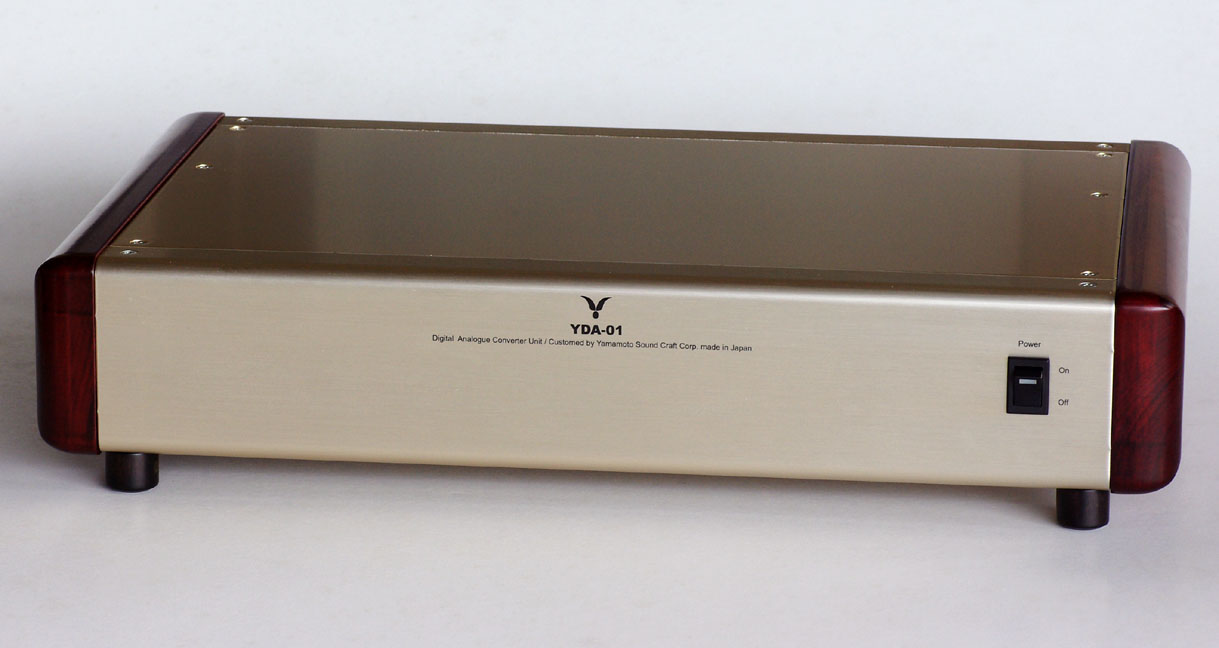
Featuring no-feedback single output circuit with a single transistor
DA converter unit YDA-01

Solving the hard playback sound of your CD player
We have been focusing our efforts on manufacturing products for reproduction of analogue disks, including manufacture of analogue cartridges and development of phono-equalizer amplifiers. However, the center player on the market is CDs, which cannot be denied. Sounds reproduced by CD players available on the market are likely to be hard with less richness, in general. Under such circumstances, we decided to make a DA converter by taking advantage of our design know-how in amplifier design we have accumulated for over 15 years. After making some experimental models, we found the output circuit of DA converter, or more specifically the IV converter and the output circuit, has the largest impact on reproduction sound. Further, we also found that the output circuit of operational amplifier type, which is popularly employed, reproduces hard sound with less richness, though the circuit offers excellent characteristics. The OP-amp circuit has many devices through which sound signals pass, and the excellent characteristics are achieved by applying a large amount of feedback. This is the complete opposite of the amplifier circuit using only two vacuum tubes that we employed for our products. The large amount of feedback would be another concern. With tube amplifiers, we have a sense that even a small amount of feedback makes reproduced sound hard, which significantly diminish the attractiveness of reproduction sound. Inevitably, we assumed a simpler circuit configuration would result in more natural sound.
Featuring no-feedback single output circuit with a single transistor
Usually, the output stage of a DA converter IC is of the current output configuration. The DA converter IC (PCM1794A) employed with YDA-01 also employs the current output configuration at the differential circuit. Therefore, the current output must be converted into popular voltage output. In addition, for differential outputting, the current output must be synthesized for conversion into one single output. For this purpose, three amplifiers are necessary in total, which makes the circuit configuration complicated very much. Since an analog filter is incorporated in the circuit in general, more complicated configuration cannot be avoided. As stated earlier, we assumed the cause for making the reproduced sound hard lies in this point and started to design a DA converter under the design concept that the output circuits of amplifiers should be as simple as possible. As a result, the circuit we employed was an output circuit of a common base, no-feedback single output type using a single transistor. Thus, we concluded that tone quality becomes more excellent as the circuit is simpler and the number of devices through which signals pass is less. We also examined an output circuit using tubes, which is our home ground, but we gave up the idea this time since the configuration becomes fairly complicated. Specifically, the operating principle of the circuit we finally employed is that current output from the DA converter is fed to the emitter of a PNP transistor, thereby converting the output into voltages by the load resistance of the collector. Actually, the circuit configuration is very simple wherein the current output is converted into voltages only by using a transistor and a resistor, and the circuit itself also plays the role of an output circuit. The circuit could hardly be simpler, though a single-stage analog filter is featured in the output stage. As for the differential output stage of PCM1794A, only the half channel is used, and the other channel is not used except for balancing the load conditions. For the transistor, we decided to use a metal case transistor which was found to give the best sound quality through our repeated listening tests. The circuit gave us very natural sound quality, with improved freshness and dynamism.
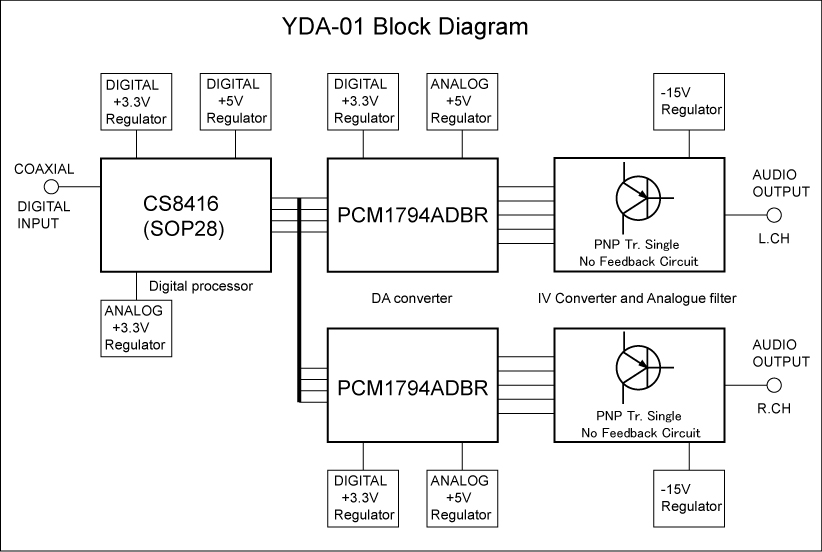
PCM1794A is used for DA converter IC in two monophonic modes.
By using L channel and R channels at a time for DA converter IC of a realization the YDA-1 for the newest highly efficient PCM1794A in monophonic mode, respectively, it is powerful, and the highest performance is considered so that there may be no interference between channels. Although PCM1794A has a large value of output current and at least one sufficient level is obtained, the more nearly energetic sound has been obtained by making it the Parallel connection.
Achieving the best performance by using two pieces of PCM1794A in the monaural mode for DA converter IC
Consideration is made to ensure powerful operation and eliminate interference between channels by using one piece of the latest, high-performance DA converter IC PCM1794A independently for the L and the R channels. The PCM1794A IC features large output current, thus ensuring sufficient output level by using a single piece. The YDA-01 achieved energetic sound by connecting two ICs in parallel.
Supply of power to respective ICs from independent regulator circuits has eliminated interference of the power supply to the IC circuits.
An IC used for a DA converter incorporates a digital circuit and an analog circuit. Therefore, the power supply terminals for the circuits are separately provided. With a general DA converter, power to such circuits is fed by one or two power supply circuits. In each of the circuits, however, leakage of noise occurs through such power supply circuits, which may affect the entire performance. In addition, power is fed to the circuits over a long distance via flat and thin PCB patterns, thereby increasing the power impedance. Typically, in general, the problem is suppressed by using many decoupling capacitors. With YDA-01, increase in impedance of the power supply line is suppressed by arranging the regulator PCB right close to each of the ICs and reducing the number of decoupling capacitors, thus attenuating the impact of capacitors on sound quality. As a result, we succeeded in eliminating almost all interferences in each circuit resulting from power supply. YDA-01 employs three regulators for the digital processor, four for the DA converter and two for the output circuit, thus making assurance doubly sure. Further, a large-capacity toroidal power transformer is employed and the windings for analogue circuits and digital circuits are arranged independent to suppress mutual interferences.
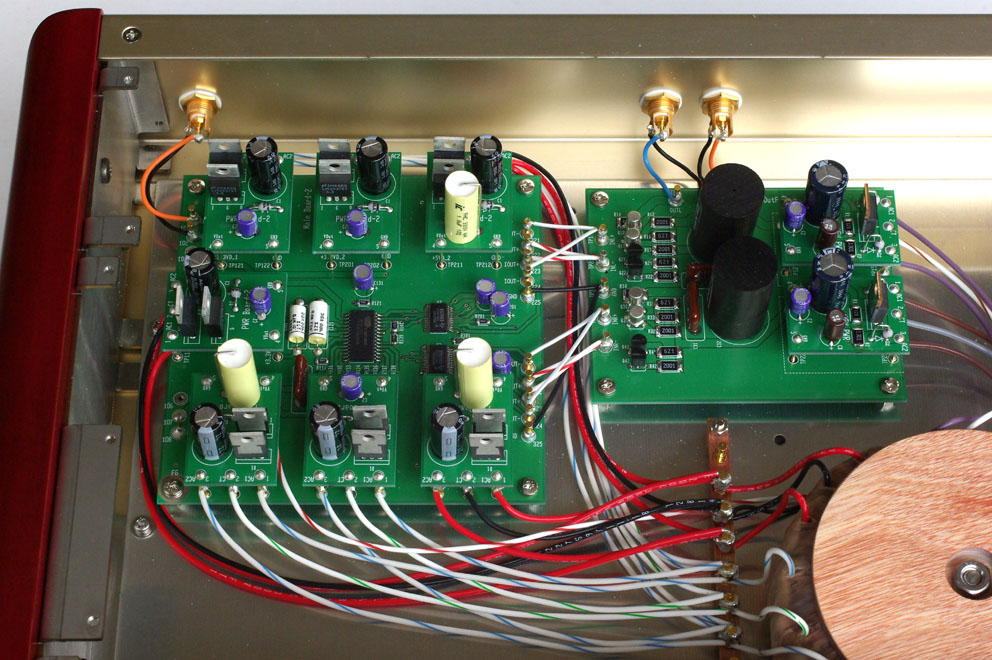
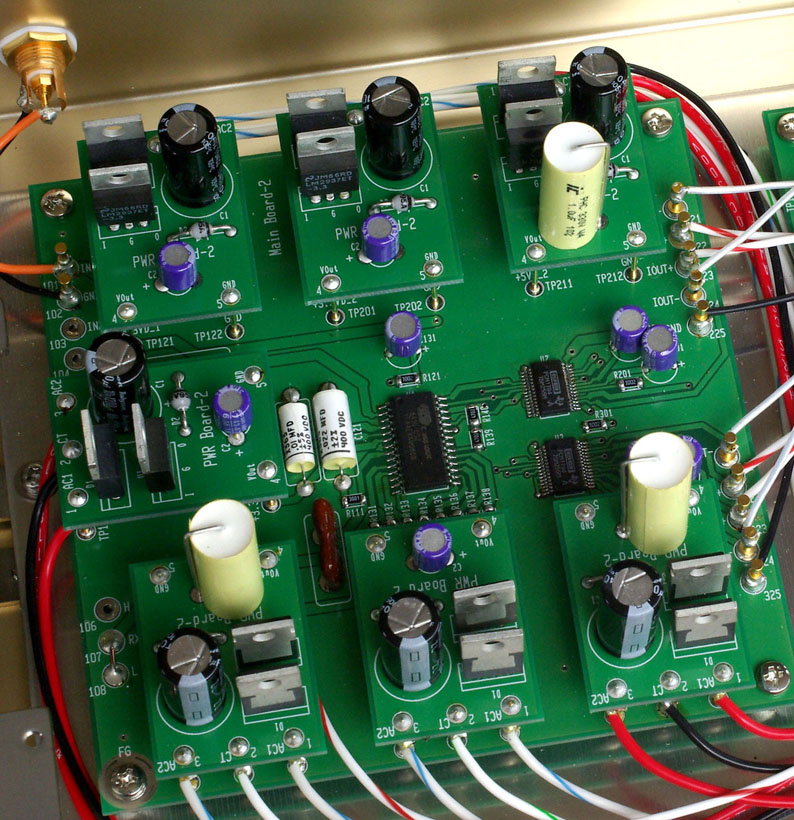
Further, a large-capacity toroidal power transformer is employed and the windings for analogue circuits and digital circuits are arranged independent to suppress mutual interferences.
The toroidal power transformer adopted for YDA-01 features excellent responsive force, and it is capable of dealing with quick variation in digital signals. The transformer has a large capacity of 150VA, which is five times or more the capacity of transformers usually used, thus supporting the powerful sound of YDA-01. A ring core having chamfered corners called Max Ring is used for the core material. The core features extremely small leakage flux and superb electromagnetic efficiency.
Whatever the audio apparatus is, the source of powerful sound quality lies in the power supply circuit, and the impact of the power supply remains same with a DA converter. An amplifier having poor power supply stage can only deliver weak sound with less power. The windings are provided independently for analogue circuits, digital circuits and the output circuit to suppress mutual interferences.
Furthermore, for wires, Teflon-insulated, silver-plated copper wires which offer excellent sound quality are employed. These wires have performance that satisfies requirements of the MIL Standards and also have supreme characteristics in terms of durability and aging.
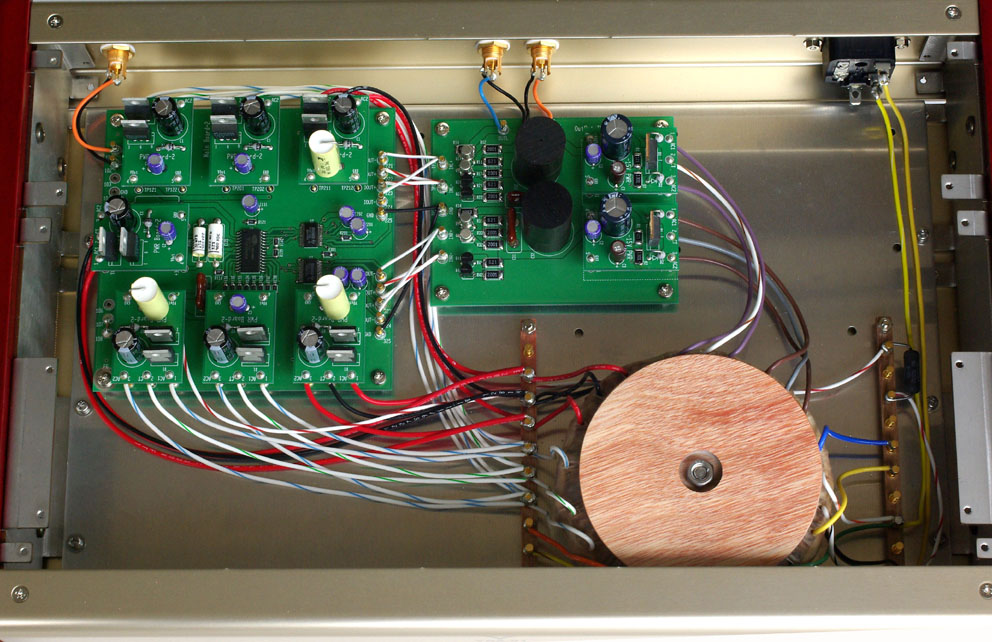
Featuring CS8416 for the digital processor IC to deal with a wide range of input signals
The well-established CS8416 is adopted for the digital processor IC of YDA-01, which ensures automatic signal tracking for a wide range of input signals covering 32kHz to 192kHz. In addition, the number of circuits is intentionally reduced to constitute a single input of the coaxial type, thus ensuring stabilized performance. Furthermore, the analog output stage also constitutes a single circuit of the RCA type for reduction in cost to achieve a product with excellent cost effectiveness.
Adopting high-quality parts to give priority to sound quality
High sound-quality parts that have been selected through listening tests are employed for all analogue, digital and power supply circuits. Capacitors that are used at important points include the mica capacitors, OS capacitors, etc. of Soshin Electric as well as polypropylene film capacitors. For resistors, we use SMD type high-capacity resistors of Dale Electronics (U.S.A.), while selecting them through listening tests. In addition, output capacitors are encased with ebony wood to assure sound quality. For input and output terminals, we use self-developed, machined phosphor bronze high-performance pin jack plugs insulated with Teflon. Although many connectors are used for digital circuits in general, we do not use any connectors, since problems associated with contact resistance and aging are likely to occur, which results in detrimental impact on sound quality very much.
Kit version is also available to respond to requirements from do-it-yourself type of users.
The kit version is also available to ensure that do-it-your-self type of user can enjoy making of the DA converter. The bottleneck in self-production of a DA converter was that the IC used for digital stage was very small and hard to handle. Incidentally, the PCM1794A package is of the small type called SSOP having the outside dimensions of 10.5mmx5.6mm and the pin pitch of 0.65mm, which makes self-production of the converter difficult. With our kit version, the complicated and precision digital stages are offered as a completed component to allow anybody to assemble the unit easily. Since the digital stage and the output stage is arranged independently, you may self-produce the output circuit to make up your original DA converter. Independent windings of 100V-0-100V, 60mA rating are also provided to ensure convenience for users who are going to make up the output circuit using tubes.
Further, an output circuit board which uses three pieces of a high-performance IC OPA627AP are used for each channel is also available as an optional component. The OP-amp type of output board is provided with a socket so that you can replace the output IC. Furthermore, the analog filter is designed to be detachable, which would be appreciated by do-it-yourself maniacs for their experimental purposes. (Complete kit set with all parts and components: 20,000yen/set, without consumption tax)

YDA-01 Specifications
Digital input terminal: Coaxial terminal (RCA) x 1
Analog output terminal: Coaxial terminal (RCA) x 1 pair
Output level: 3.1V/0dB
Handling frequency: 32 to 192 kHz (automatic signal tracking)
8x oversampling digital filter
Frequency response: 20 to 20kHz (±1dB)
SN ratio: 86dB (IHF-A wtd.)
Output impedance: 2.6kΩ
Outside dimensions: 420 (W) x 290 (D) x 94 (H) mm
Gross weight: 5.2kg
お問い合わせ(Inquiry): shige-y@mh1.117.ne.jp
担当(Charge):山本(Yamamoto)
Copyright ? 2002-2009 Yamamoto Sound Craft All Rights Reserved.